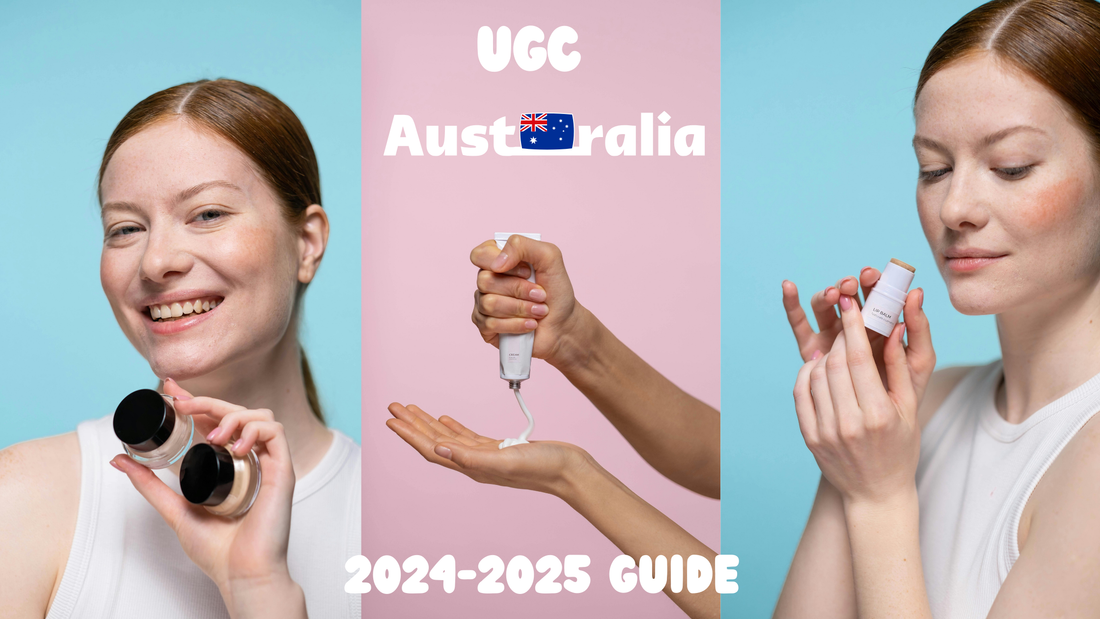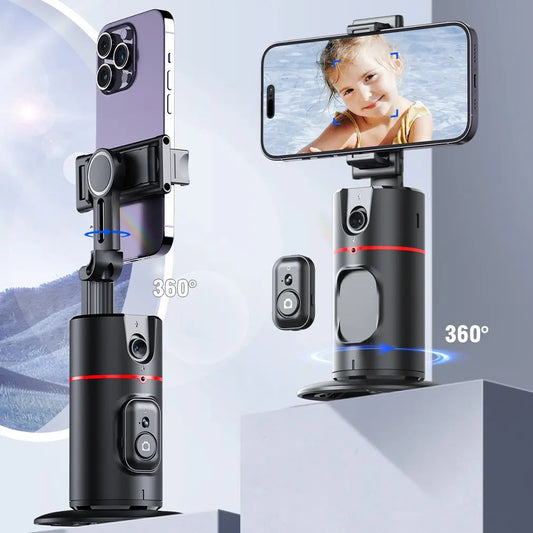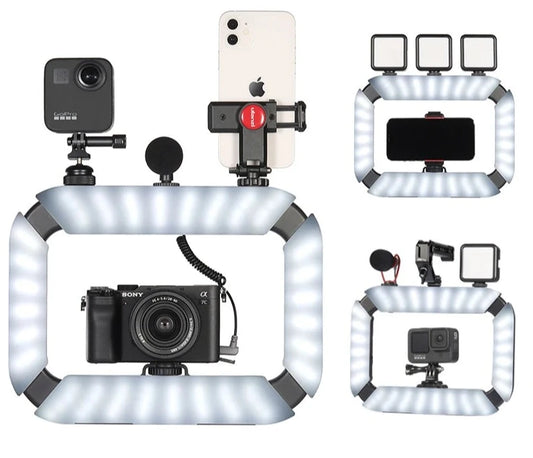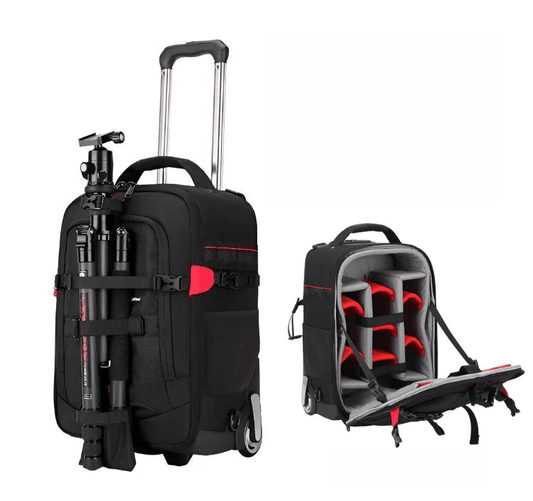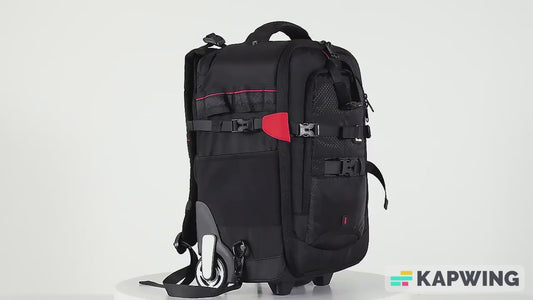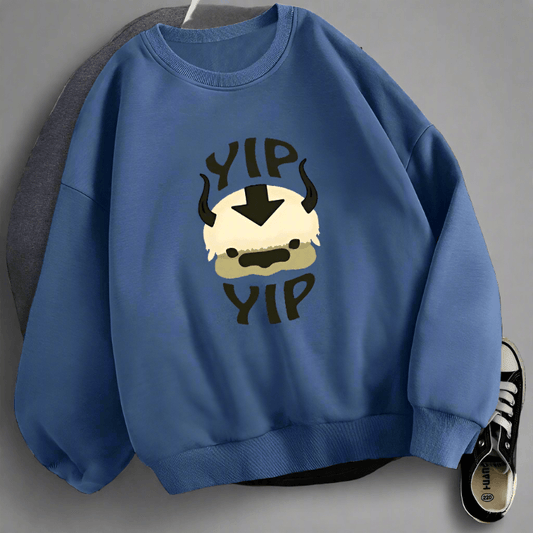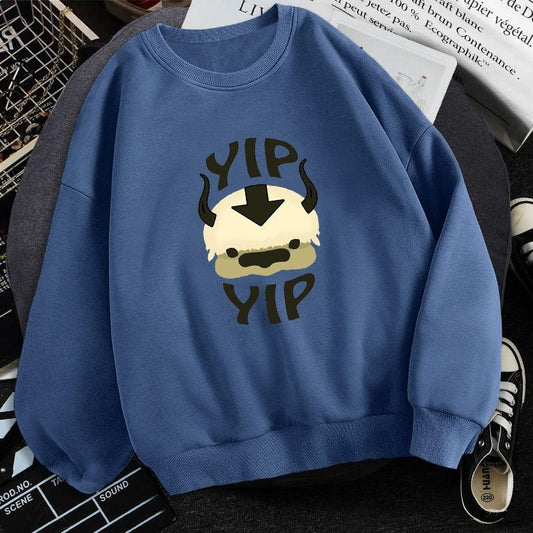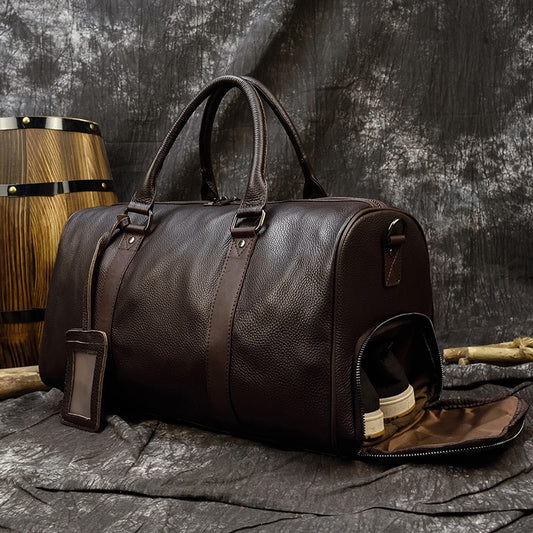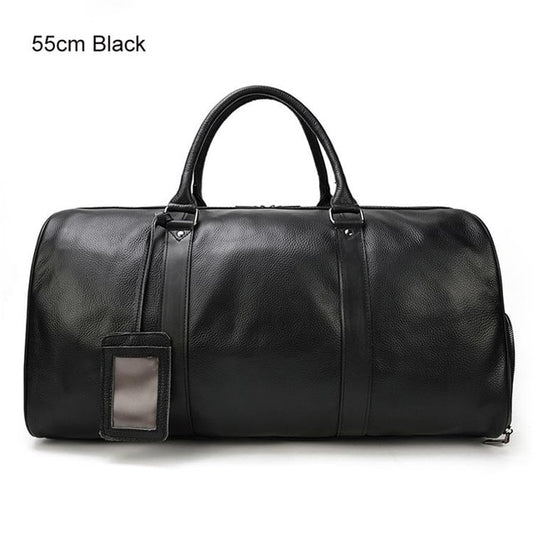1. Introduction to UGC Creation
User Generated Content (UGC) has revolutionized digital marketing, especially in Australia's vibrant online landscape. UGC refers to any content—videos, images, reviews, or social media posts—created by individuals rather than brands. This content showcases authentic experiences with products or services, lending credibility that traditional advertising often lacks.
In Australia, UGC has gained significant traction due to the country's high social media penetration. According to the Digital 2021 Australia report, a staggering 20.5 million Australians use social media, representing 80% of the total population. This high engagement rate creates a fertile ground for UGC creators.
The power of UGC lies in its authenticity and relatability. Australian consumers, like their global counterparts, are increasingly skeptical of traditional advertising. They seek genuine experiences and opinions from peers before making purchasing decisions. UGC bridges this trust gap, providing real-world perspectives that resonate with audiences.
2. Understanding the UGC Landscape in Australia
2.1 The Rise of UGC in Australia
Several factors contribute to the surge in UGC popularity in the Australian market:
- Trust Factor: A Nielsen study found that 92% of Australian consumers trust recommendations from friends and family over all other forms of advertising. UGC taps into this trust, acting as a digital word-of-mouth.
- Authenticity: In a market saturated with polished advertisements, Australians crave authentic content that reflects real experiences. UGC provides a raw, unfiltered look at products and services.
- Mobile-First Approach: With 88% of Australians owning a smartphone, mobile-friendly UGC is highly accessible and shareable. This accessibility has led to the rise of platforms like Instagram and TikTok, which are primarily mobile-based.
- Cultural Diversity: Australia's multicultural society is reflected in its UGC. Creators from various backgrounds share unique perspectives, enriching the content landscape.
2.2 Key Industries Leveraging UGC in Australia
- Tourism: Australia's diverse landscapes and attractions make it a prime destination for travel content. Tourism boards and travel companies heavily rely on UGC to showcase authentic experiences. For example, Tourism Australia's "Holiday Here This Year" campaign extensively used UGC to promote domestic travel during the pandemic.
- Food and Beverage: The Australian culinary scene, from hipster cafes in Melbourne to beachside restaurants in Gold Coast, benefits greatly from user-generated reviews and food photography. Platforms like Zomato and Yelp thrive on user-generated restaurant reviews.
- Retail: Australian retailers, especially in fashion and lifestyle sectors, use UGC to build trust and showcase products in real-life settings. Brands like Cotton On and Mimco often repost customer photos on their social media accounts.
- Sports and Fitness: With Australia's strong sporting culture, UGC plays a crucial role in promoting sporting events, fitness products, and healthy lifestyles. The Australian Football League (AFL) regularly features fan-generated content during broadcasts and on social media.
- Technology: As Australia embraces digital transformation, tech companies leverage UGC for product reviews, unboxing videos, and user tutorials. This is particularly evident in the booming Australian startup scene.
3. Getting Started as a UGC Creator in Australia
3.1 Identifying Your Niche
To stand out in the Australian UGC space, it's crucial to find your niche. Consider the following:
- Personal Interests: What are you passionate about? Australian outdoor adventures? Local cuisine? Tech gadgets? Your enthusiasm will shine through in your content.
- Market Demand: Research which industries in Australia are actively seeking UGC creators. Tools like Google Trends can help you identify rising topics in Australia.
- Unique Perspective: What unique angle can you offer? For instance, you could create content about sustainable living in Australian cities or showcase lesser-known Australian products. Your unique voice is your greatest asset.
Examples of successful niches in the Australian UGC space:
- Bushwalking and nature photography in Australia's national parks
- Reviewing Australian craft beers and small-batch wines
- Showcasing Indigenous Australian art and culture
- Exploring Australia's startup ecosystem and tech innovations
3.2 Building Your Skills
To create high-quality UGC, focus on developing these skills:
Photography and Videography
Learn to capture stunning visuals that resonate with Australian aesthetics. Here's a quick guide to improve your photography skills:
- Understand the Rule of Thirds: Divide your frame into a 3x3 grid and place key elements along these lines or at their intersections.
- Master Natural Lighting: Australia's abundant sunlight is perfect for photography. Learn to shoot during the "golden hour" (just after sunrise or before sunset) for warm, flattering light.
- Tell a Story: Every image should convey a narrative. For example, when photographing Australian landscapes, include elements that give a sense of scale or local flavor.
- Practice Composition: Experiment with leading lines, symmetry, and framing to create visually appealing images.
- Invest in a Good Smartphone or Camera: While expensive equipment isn't necessary, ensure you have a device capable of capturing high-quality images and videos.
Editing
Master tools like Adobe Premiere Pro, Lightroom, or user-friendly apps like Canva. Here's a basic editing workflow:
- Adjust Exposure and Contrast: Brighten underexposed areas and enhance contrast for more vibrant images.
- Fine-tune Colors: Adjust saturation and vibrancy to make colors pop, but avoid over-editing.
- Crop and Straighten: Improve composition by cropping out distractions and straightening horizons.
- Add Filters: Use filters sparingly to enhance mood, but maintain authenticity.
- Export in High Quality: Ensure your final product maintains its quality when uploaded to social media platforms.
Storytelling
Develop a compelling narrative style that captures the Australian spirit. Tips for effective storytelling:
- Start Strong: Hook your audience with an intriguing opening that showcases uniquely Australian elements.
- Be Authentic: Share personal experiences and genuine opinions to build trust with your audience.
- Use Aussie Slang Judiciously: Incorporate Australian colloquialisms, but don't overdo it.
- Create a Narrative Arc: Even short-form content should have a beginning, middle, and end.
- End with a Call-to-Action: Encourage engagement by asking questions or prompting viewers to share their experiences.
SEO Basics
Understand how to optimize your content for search engines, focusing on Australian search trends. Key SEO tips:
- Research Australian Keywords: Use tools like Google Keyword Planner to find popular search terms in Australia.
- Optimize Titles and Descriptions: Include relevant keywords in your content titles and descriptions.
- Use Location-Specific Tags: Incorporate Australian place names and local terms to improve local SEO.
- Create High-Quality, Original Content: Search engines favor unique, valuable content.
- Build Backlinks: Collaborate with other Australian creators and websites to increase your content's authority.
3.3 Essential Equipment
While you don't need professional-grade equipment to start, consider investing in:
- A good smartphone with a high-quality camera (e.g., iPhone 15 Pro, Google Pixel 8, Samsung Galaxy S24)
- A lightweight, portable tripod for stability (e.g., AI-Powered Auto Face Tracking Tripod)
- A ring light for better lighting in various conditions (e.g., Portable Photoshoot Ring Light)
- Basic editing software or apps (e.g., Adobe Lightroom Mobile, VSCO, Snapseed)
- A reliable external hard drive for backing up your content (e.g., WD My Passport)
As you grow, consider investing in:
- A DSLR or mirrorless camera for higher quality photos and videos
- A drone for unique aerial shots of Australia's landscapes (ensure you're familiar with local drone laws)
- Professional editing software like Adobe Creative Suite
4. Navigating Legal Considerations for UGC in Australia
4.1 Understanding Australian Consumer Law (ACL)
The ACL plays a crucial role in regulating UGC, especially when it comes to sponsored content. Key points to remember:
- Disclosure: Always disclose partnerships or sponsorships clearly. Use hashtags like #ad, #sponsored, or #paidpartnership. The placement of these disclosures is crucial -- they should be prominently displayed and easily noticeable.
- Truthful Representation: Ensure your content accurately represents the product or service you're showcasing. Avoid exaggeration or misrepresentation, even if it might make the content more appealing.
- Avoid Misleading Claims: Don't make exaggerated or false claims about products or services. If you're stating an opinion, make it clear that it's your personal view.
Example of Compliant Disclosure:
"I've partnered with [Brand Name] to try their new [Product]. While this post is sponsored, all opinions are my own. #sponsored"
4.2 Copyright Act 1968
As a UGC creator, it's essential to understand your rights under the Copyright Act:
- Automatic Protection: Your original content is automatically protected under Australian copyright law. This includes photos, videos, and written content you create.
- Licensing: When working with brands, clarify the terms of content usage and licensing. Specify:
- Duration of use
- Platforms where the content can be shared
- Any restrictions on content modification
- Fair Dealing: Understand the concept of 'fair dealing' for criticism, review, or parody purposes. This allows limited use of copyrighted material without permission, but it's important to understand the boundaries.
Example of a Basic Licensing Agreement Clause:
"Creator grants [Brand Name] a non-exclusive license to use the content on [specified platforms] for a period of [duration], without modification, for the purpose of [specific campaign or use]."
4.3 Advertising Standards Bureau (ASB) and ACCC Guidelines
Familiarize yourself with the guidelines set by these regulatory bodies:
ASB
Adheres to the AANA Code of Ethics, which covers issues like discrimination, sexual appeal, violence, and language in advertising. Key points:
- Ensure content is socially responsible
- Avoid content that could be seen as exploitative or degrading
- Be mindful of using language appropriate for the target audience
ACCC
Provides guidelines on influencer marketing, emphasizing the importance of transparency in sponsored content. Their guidelines state:
- Influencers must clearly disclose any commercial relationships
- Disclosures should be clear, upfront, and easy to understand
- The use of ambiguous hashtags like #sp or #collab is discouraged
Example of ACCC-Compliant Disclosure:
"This post is a paid partnership with [Brand Name]. I received [product/payment] in exchange for this review."
5. Mastering Popular UGC Platforms in Australia
5.1 Instagram
With over 9 million users in Australia, Instagram is a powerhouse for UGC. Tips for success:
Content Strategy:
- Utilize Instagram Stories and Reels to capture short-form, engaging content. Stories are perfect for behind-the-scenes glimpses or quick tips, while Reels can showcase your creativity with trends and challenges.
- Use location tags to increase visibility among local audiences. For example, tagging "Sydney Opera House" or "Great Barrier Reef" can help your content reach people interested in these locations.
- Engage with Australian brands and fellow creators through comments and collaborations. Look for local hashtags like #AustralianCreators or #AussieInfluencers to find potential collaborators.
Optimization Tips:
- Use a mix of popular and niche Australian hashtags. For example, #AussieLife (broad) and #MelbourneCoffee (niche).
- Optimize your bio with relevant keywords and a clear description of your niche.
- Utilize Instagram's alt text feature to describe your images, improving accessibility and SEO.
Engagement Tactics:
- Host Q&A sessions in your Stories to interact with your Australian audience.
- Create polls or quizzes about Australian topics to boost engagement.
- Respond to comments promptly and authentically to build a loyal community.
5.2 YouTube
YouTube offers a platform for longer, more in-depth content. Strategies for Australian YouTubers:
Content Ideas:
- Create content that caters to Australian interests, such as local travel guides, product reviews of Australian brands, or "Day in the Life" vlogs showcasing Australian lifestyle.
- Develop series focused on uniquely Australian topics, like "Exploring Australia's Hidden Gems" or "Aussie Slang Explained".
Optimization Strategies:
- Optimize your videos for Australian search terms. Use tools like TubeBuddy or VidIQ to research popular Australian keywords.
- Create compelling thumbnails that stand out and accurately represent your content.
- Write detailed, keyword-rich descriptions for your videos, including timestamps for longer content.
Monetization:
- Participate in YouTube's Partner Program to monetize your content through ads.
- Explore sponsorship opportunities with Australian brands relevant to your niche.
- Consider creating members-only content or utilizing Super Chat during live streams.
5.3 TikTok
TikTok's popularity is soaring in Australia, especially among younger audiences. To succeed:
Content Approach:
- Stay on top of trending challenges and adapt them to an Australian context. For example, put an Aussie spin on global trends.
- Use popular Australian music in your videos to increase local appeal. This could include tracks from Australian artists or iconic Australian songs.
- Experiment with TikTok's diverse features like duets and stitches to collaborate with other Australian creators.
Growth Hacks:
- Participate in local hashtag challenges. Create content for hashtags like #AussieTikTok or #TikTokAustralia.
- Utilize TikTok's 'For You Page' algorithm by creating content that encourages rewatches and shares.
- Post consistently, ideally 1-3 times per day, to increase your chances of going viral.
Engagement Strategies:
- Respond to comments with video replies to boost engagement and create a conversation.
- Use trending sounds and effects to increase your content's discoverability.
- Collaborate with other Australian TikTokers through duets or joint challenges.
5.4 Twitter
While not as visually focused, Twitter is excellent for real-time engagement:
Content Strategy:
- Participate in conversations about current Australian events and trends. Use trending hashtags related to Australian news, sports, or entertainment.
- Use relevant Australian hashtags to increase visibility. Examples include #AusPol for politics or #AusOpen during the Australian Open tennis tournament.
- Share quick tips, reviews, or behind-the-scenes content that gives followers a snapshot of Australian life or your niche.
Engagement Tactics:
- Utilize Twitter Spaces to host live audio conversations about Australian topics.
- Create Twitter Moments to curate content around specific Australian themes or events.
- Engage with Australian influencers, brands, and media outlets to increase your visibility.
5.5 Facebook
With a broad user base in Australia, Facebook is ideal for reaching diverse audiences:
Community Building:
- Join and engage in Australian Facebook groups related to your niche. For example, if you're a food blogger, join groups like "Australian Foodies" or "Melbourne Food Lovers".
- Utilize Facebook Live to connect with your audience in real-time. Host Q&A sessions or live events relevant to your Australian audience.
- Create your own Facebook group focused on your niche to build a dedicated community.
Content Mix:
- Share a mix of content types, including links to your content on other platforms, native videos, and engaging status updates.
- Use Facebook's poll feature to gather opinions on Australian topics related to your niche.
- Experiment with Facebook Stories for more casual, day-to-day content.
Optimization Tips:
- Optimize your Facebook page with relevant keywords in the 'About' section.
- Use Facebook Insights to understand when your Australian audience is most active and post accordingly.
- Leverage Facebook's targeting options when boosting posts to reach specific Australian demographics.
6. Monetization Strategies for Australian UGC Creators
6.1 Partnerships and Sponsored Content
As an Australian UGC creator, partnerships and sponsored content can be a significant source of income. Understanding how to approach and work with brands is crucial for your success.
Research Australian Brands:
- Use tools like BrandSnob or TRIBE to find Australian brands looking for UGC creators.
- Start with local Australian brands before approaching larger companies.
- Identify brands that align with your niche and values.
- Research trending Australian hashtags like #AustralianMade or #BuyFromTheBush to identify potential brand partnerships.
Develop a Media Kit:
Your media kit is your professional calling card. Create one that includes:
- Your audience demographics (focus on your Australian following)
- Engagement rates across platforms
- Examples of past collaborations with Australian brands
- Your content style and niche focus (e.g., Australian travel, local fashion, native cuisine)
A well-crafted media kit showcases your value to potential partners and increases your chances of securing collaborations.
Pitch Effectively:
- Personalize your outreach to each brand, showing how your content aligns with their values and target audience.
- Propose specific content ideas that showcase the brand in an authentic, Australian context. For example, if pitching to R.M. Williams, suggest a series showcasing their boots in various Australian landscapes.
- Be clear about your rates and what the brand will receive in return, such as number of posts, stories, or video content.
6.2 Affiliate Marketing
Affiliate marketing can provide a steady stream of passive income for Australian UGC creators. Here's how to make the most of this strategy:
Join Australian Affiliate Programs:
- Sign up for programs of major Australian retailers:
- Explore niche-specific programs:
- Outdoor gear: Anaconda
- Beauty products: Adore Beauty
- Health supplements: iHerb Australia
Disclosure and Integration:
Clearly disclose affiliate relationships in your content. Use phrases like:
"This post contains affiliate links. I may earn a commission if you make a purchase through these links at no additional cost to you."
Integrate affiliate products naturally into your content:
- Create "Top 10 Australian-Made Skincare Products" featuring items from Adore Beauty
- Develop an "Essential Gear for the Great Ocean Road Trip" guide with products from Anaconda
Optimize for Conversions:
- Use compelling calls-to-action (CTAs) that resonate with Australian audiences:
- "Support local Aussie businesses by checking out this product!"
- "Get ready for summer with these Australian-designed swimwear pieces"
- Create comparison content or honest reviews to help your audience make informed decisions.
- Track your affiliate performance using tools like Google Analytics or ClickMeter to focus on promoting products that convert well with your audience.
6.3 Selling Your Own Products or Services
Creating and selling your own products or services can be a lucrative way to monetize your UGC brand in Australia.
Develop Digital Products:
- E-books or online courses tailored to the Australian market:
- "Ultimate Guide to Australian Road Trips"
- "Mastering Australian-Style Coffee at Home"
- "Photography Guide: Capturing Australia's Unique Landscapes"
- Downloadable resources:
- Australian travel itineraries (e.g., "7-Day Sydney to Melbourne Coastal Drive")
- Local photography presets (e.g., "Outback Sunset Lightroom Presets")
- Australian recipe collections (e.g., "Modern Aussie BBQ Cookbook")
Create Merchandise:
- Design merchandise that resonates with your Australian audience:
- Apparel featuring Australian slang or iconic landmarks
- Phone cases with native flora and fauna designs
- Reusable shopping bags with Australian-themed artwork
- Use print-on-demand services to minimize upfront costs:
Offer Services:
- Provide photography or content creation workshops:
- "Mastering Drone Photography in Australian Landscapes"
- "Creating Authentic Aussie Lifestyle Content for Social Media"
- Offer consulting services:
- Help international brands adapt their UGC strategies for the Australian market
- Provide local insights and cultural guidance for global campaigns targeting Australian audiences
6.4 Platform-Specific Monetization
Each social media platform offers unique monetization opportunities for Australian UGC creators.
YouTube:
- Join the YouTube Partner Program to earn from ads. Ensure your content complies with Australian advertising standards as outlined by the Australian Association of National Advertisers (AANA).
- Utilize YouTube's Super Chat and Channel Memberships features to earn from your most dedicated followers.
- Create content that appeals to both local and international audiences, such as "10 Unique Australian Foods You Must Try" or "A Day in the Life of an Aussie Surfer".
Instagram:
- Use Instagram Shopping features to tag products in your posts and stories, perfect for showcasing Australian brands.
- Collaborate with brands on Instagram Reels, which often have higher payouts due to Instagram's push for short-form video content.
- Utilize Instagram's Branded Content Tools to clearly disclose partnerships and provide analytics to brands.
TikTok:
- Participate in the TikTok Creator Fund when available in Australia to earn based on video views and engagement.
- Use TikTok's Creator Marketplace to connect with brands for sponsored content opportunities.
- Create trending content with an Australian twist, such as "#AussieCheck" videos or "Day in the Life of an Australian [profession]" series.
By diversifying your monetization strategies across these platforms, you can create multiple income streams and maximize your earnings as an Australian UGC creator.
7. Pricing and Charging Rates for Australian UGC Creators
7.1 Understanding the Australian Market
Pricing your UGC services effectively starts with understanding the current market rates and industry standards in Australia. Knowing what others in your niche charge helps you set competitive and fair prices.
Average Rates in the Australian Market:
- Micro-influencers (1,000-10,000 followers): AUD 50-250 per post
- Mid-tier influencers (10,000-100,000 followers): AUD 250-1,000 per post
- Macro-influencers (100,000+ followers): AUD 1,000-5,000+ per post
These figures provide a benchmark, helping you gauge where you fit in and set your rates accordingly.
Industry Standards:
- Fashion and Beauty: Higher rates due to the cost of products and production value.
- Travel: Payments may include accommodation and experiences, alongside monetary compensation.
- Food and Beverage: Often a mix of product compensation and cash.
Understanding these nuances helps you tailor your pricing to specific industries, ensuring you’re competitively priced while also valuing your work appropriately.
7.2 Factors Affecting Pricing
Several factors influence how you should price your UGC services, beyond just the number of followers you have.
Engagement Rate:
- Calculate your engagement rate: (Likes + Comments) / Followers x 100.
- Higher engagement rates (3-6% is considered good) can justify higher rates since they indicate an active and interested audience, which is more valuable to brands.
Content Type:
- Video content usually commands higher rates than static posts due to the increased time and effort required for production.
- Long-form content, such as detailed blog posts or YouTube videos, often warrants higher compensation due to their depth and the effort involved in creating them.
Usage Rights:
- If a brand wants exclusive rights to your content or intends to use it for an extended period, you should increase your fee.
- Clarify if the brand plans to repurpose your content on their own channels, and price accordingly.
Production Costs:
- Factor in any expenses for creating high-quality content, such as travel costs, equipment rental, or hiring assistants.
- High-quality content often requires significant investment, and your pricing should reflect these costs to ensure you’re not out of pocket.
7.3 Pricing Structures
Offering flexible pricing options can help you cater to different clients and projects, ensuring you maximize your earnings.
Per Post:
- Instagram post: AUD 100-500, depending on your following and engagement.
- YouTube video: AUD 500-2,000, based on its length and production quality.
- TikTok video: AUD 50-300, considering the platform's focus on authentic, less polished content.
Per Project:
- Comprehensive campaigns involving multiple posts or platforms: AUD 500-2,000.
- Provide a detailed breakdown of deliverables, such as the number of posts, stories, or videos, to justify your pricing.
Hourly Rates:
- AUD 50-150 per hour for content creation and consultation.
- Ideal for longer-term projects or when scope is uncertain.
7.4 Negotiation Tips
Effective negotiation can significantly enhance your earnings and foster long-term partnerships with brands.
Research:
- Use tools like SocialBlade or HypeAuditor to compare your metrics with other Australian creators in your niche.
- Join Australian influencer networks or Facebook groups to discuss rates with peers.
Value Proposition:
- Clearly articulate the unique value you bring to brands, such as your authentic voice or highly engaged Australian audience.
- Highlight past successes, including high engagement rates or conversion data from previous campaigns, to demonstrate your effectiveness.
Package Deals:
- Offer discounts for long-term collaborations or multi-platform campaigns to incentivize ongoing partnerships.
- Create tiered packages (bronze, silver, and gold) with increasing deliverables and value. This not only makes your services more appealing but also provides brands with a clear understanding of what they’re getting at different price points.
Performance Bonuses:
- Propose performance bonuses for exceeding agreed-upon metrics, such as views, engagement, or conversions. This shows confidence in your ability to deliver results and aligns your interests with the brand’s, creating a win-win situation.
External Resources
- For a comprehensive look at UGC pricing strategies, visit Influencer Marketing Hub.
- Learn more about engagement rate calculations and their impact on pricing from Sprout Social.
8. Invoicing and Getting Paid as an Australian UGC Creator
8.1 Setting Up Your Business Structure
Choosing the right business structure is crucial for managing your finances and liabilities effectively. Here are the two main options:
Sole Trader:
- Simplest structure, suitable for most beginners
- Easy to set up and manage
- You're personally liable for all aspects of the business
Company:
- Offers more protection but involves more complex obligations
- Separates personal and business liabilities
- More expensive to set up and maintain
Consult with an accountant or business advisor to determine the best structure for your situation.
8.2 Australian Business Number (ABN)
An Australian Business Number (ABN) is essential for invoicing and tax purposes.
Apply for an ABN:
- Visit the Australian Business Register website to apply.
- An ABN is free to obtain and usually processed within minutes.
- You'll need this for invoicing and tax purposes.
Use your ABN:
- Include your ABN on all invoices.
- Use it when dealing with other businesses and for tax purposes.
8.3 Creating Professional Invoices
Creating professional invoices ensures you get paid promptly and maintains a good relationship with your clients. Include the following in your invoices:
- Your Business Name and ABN
- Client's Details (Name, Address, ABN if applicable)
- Invoice Number and Date
- Description of Services (be specific about deliverables)
- Payment Terms and Due Date
- GST (if registered)
- Your bank details or preferred payment method
Pro Tip: Use accounting software like Xero or MYOB to create professional invoices and track your finances.
8.4 Payment Methods
Offering multiple payment options can make it easier for clients to pay you. Here are some common methods:
Direct Bank Transfer:
- Most common method in Australia
- Provide your BSB and account number
- Consider setting up a separate business account after you start growing as a UGC creator.
PayPal:
- Convenient for international clients
- Be aware of PayPal fees when setting your rates
Stripe:
- Useful for accepting credit card payments
- Can be integrated with many invoicing and accounting tools
8.5 Tax Considerations
Managing your taxes effectively is crucial to avoid surprises at the end of the financial year. Here are some key points to consider:
Keep accurate records:
- Use accounting software or spreadsheets to track all income and expenses
- Keep receipts for all business-related purchases
GST Registration:
- Consider registering for GST if your annual turnover exceeds AUD 75,000
- If registered, you'll need to add 10% GST to your invoices and submit quarterly Business Activity Statements (BAS)
Set aside money for tax:
- As a general rule, set aside 30-35% of your earnings for tax payments
- Consider making quarterly tax installments to avoid a large bill at the end of the financial year
Seek professional advice:
- Consult with a tax accountant familiar with the creative industry to ensure you're meeting all obligations and maximizing claimable deductions
9. Building and Showcasing Your UGC Portfolio
9.1 Creating a Diverse Portfolio
Building a diverse portfolio is essential for showcasing your versatility and range as a UGC creator. It allows potential clients to see the different types of content you can produce and how well you adapt to various formats.
Include a Variety of Content Types:
-
Photos:
High-quality photos are fundamental to any portfolio, demonstrating your ability to capture visually appealing content.
- Product shots in Australian settings (e.g., showcasing swimwear at Bondi Beach)
- Lifestyle images that capture the Australian way of life
- Before-and-after comparisons (great for beauty or fitness niches)
-
Videos:
Video content is highly engaging and often more effective in capturing audience attention.
- Unboxing videos of Australian products
- Tutorials tailored to Australian audiences (e.g., "How to Style Aussie Brands for Winter")
- Product reviews with an Australian perspective
-
Written Content:
Written content, such as blog posts and captions, showcases your ability to engage audiences through text.
- Blog posts about Australian experiences or products
- Engaging captions that capture the Australian voice
- Product descriptions that resonate with local consumers
-
Audio:
Audio content, such as podcasts, can highlight your communication skills and connect with audiences in a different way.
- Podcast snippets discussing Australian trends or reviewing local products
- Voice-overs for videos that showcase your Australian accent (if applicable)
9.2 Highlighting Metrics and Results
Metrics and results are key to proving your effectiveness as a UGC creator. Highlighting these can help potential clients understand the value you bring. It is essential to showcase not just the content you create but also the impact it has.
Showcase the Impact of Your UGC:
-
Engagement Rates:
Engagement rates indicate how well your content resonates with your audience.
- Display likes, comments, and shares on your posts
- Calculate and highlight your average engagement rate across platforms
-
Conversion Data:
Conversion data can demonstrate your ability to drive actions, such as sales or sign-ups.
- If available, include sales or sign-up data resulting from your content
- Use UTM parameters to track clicks and conversions from your links
-
Client Testimonials:
Testimonials from satisfied clients can build credibility and trust.
- Feature positive feedback from Australian brands you've worked with
- Include specific results or ROI data if provided by the client
9.3 Portfolio Platforms
Choosing the right platform to showcase your work can significantly impact your visibility and attractiveness to potential clients. Each platform has its own strengths and can be used to highlight different aspects of your portfolio.
Choose Platforms that Best Display Your Work:
-
Personal Website:
A personal website can serve as a central hub for all your work and provide a professional presentation.
- Create a professional site using platforms like WordPress or Squarespace
- Organize your work by niche, platform, or content type
- Include an "About Me" section that highlights your unique Australian perspective
-
Behance:
Behance is ideal for visual content creators and allows you to create projects showcasing your best work for different brands or campaigns.
-
LinkedIn:
LinkedIn is great for networking and showcasing professional achievements. Share case studies of successful campaigns you've worked on.
-
Instagram Highlights:
Instagram's highlight feature allows you to categorize and showcase your best work. Create highlights for different content types or brand collaborations.
10. Approaching Brands as an Australian UGC Creator
10.1 Researching Potential Partners
Identifying the right brands to collaborate with is key to building successful partnerships. Focus on brands that align with your niche and values to ensure a good fit. This ensures that the collaboration is mutually beneficial and has a higher chance of success.
Focus on Australian Brands:
- Look for local brands that align with your niche and values
- Research international brands with a strong presence in Australia
Use Tools to Identify Opportunities:
- Ahrefs or SEMrush to identify brands actively investing in influencer marketing
- Social listening tools like Mention or Hootsuite to find brands engaging with UGC
Stay Informed about Industry Trends:
- Follow Australian marketing publications like CMO Australia or Marketing Mag
- Attend local marketing events or webinars to understand brand priorities
10.2 Crafting Your Pitch
Crafting a personalized and compelling pitch is essential for capturing the interest of potential brand partners. A well-crafted pitch shows that you understand the brand and can offer valuable content. This increases your chances of securing collaborations and establishing long-term partnerships.
Personalize Each Pitch:
- Address the right person (research on LinkedIn or the company website)
- Show understanding of the brand's values and recent campaigns
Highlight Your Australian Expertise:
- Emphasize your understanding of the local market and consumer behavior
- Showcase how your content resonates with Australian audiences
Propose Specific Content Ideas:
- Tailor ideas to the brand's products or services
- Explain how your content can help them achieve their marketing goals
Include Relevant Metrics:
- Share engagement rates, audience demographics, and past campaign successes
- Focus on metrics that matter to the brand (e.g., conversions for e-commerce brands)
10.3 Building Relationships
Building and maintaining strong relationships with brands is essential for long-term success. This involves consistent engagement and networking to keep your collaborations thriving. Strong relationships can lead to ongoing partnerships and more opportunities for collaboration.
Engage with Brands on Social Media:
- Comment thoughtfully on their posts
- Share their content with your audience when relevant
Attend Industry Events:
- Participate in marketing conferences or brand launch events
- Network with brand representatives and fellow creators
Join Influencer Platforms:
- Sign up for platforms popular in Australia, such as TRIBE or Hypetap
- These can connect you with brands actively seeking UGC creators
Follow Up and Nurture Relationships:
- Send thank you notes after collaborations
- Keep brands updated on your growth and new offerings
11. Content Moderation and Community Management
11.1 Understanding Platform Guidelines
Understanding platform guidelines is crucial for maintaining compliance and ensuring that your content reaches and engages your audience without any issues. This knowledge helps you navigate content restrictions and avoid penalties.
Familiarize Yourself with Community Guidelines:
- Read and understand the guidelines for each platform you use
- Pay special attention to content restrictions, copyright policies, and engagement rules
Stay Updated on Changes:
- Follow official platform blogs or newsletters for updates
- Join creator communities to discuss and clarify guideline interpretations
11.2 Engaging with Your Audience
Engaging with your audience effectively can help build a loyal and interactive community. Prompt and authentic engagement fosters a positive environment and encourages further interaction.
Respond Promptly:
- Set aside time each day to respond to comments and messages
- Use a conversational, authentic tone that reflects your brand
Foster a Positive Community:
- Establish clear community guidelines for your followers
- Moderate discussions to maintain a respectful environment
Use Social Listening Tools:
- Monitor mentions of your name or brand across platforms
- Engage in relevant conversations to expand your reach
11.3 Handling Negative Feedback
Handling negative feedback professionally can turn a potentially damaging situation into an opportunity for growth. Responding constructively to criticism demonstrates your commitment to improving and maintaining a positive reputation.
Address Criticism Professionally:
- Respond to negative comments calmly and constructively
- Offer to take the conversation private for more complex issues
Use Feedback to Improve:
- Analyze negative feedback for common themes or issues
- Adjust your content strategy based on constructive criticism
Know When to Disengage:
- Identify trolls or persistently abusive users
- Use platform tools to hide, delete, or block when necessary
12. Staying Compliant and Ethical
12.1 Disclosure Best Practices
Transparency is key when it comes to sponsored content and affiliate marketing. Clear and honest disclosures build trust with your audience and ensure compliance with advertising regulations.
Be Transparent about Sponsorships:
- Use clear language like "This post is sponsored by [Brand]" or "Ad"
- Place disclosures where they're easily noticeable, not buried in hashtags
Use Platform-Specific Features:
- Utilize Instagram's "Paid Partnership" tag for sponsored posts
- Use YouTube's built-in disclosure features for sponsored content
Disclose Affiliate Relationships:
- Clearly state when you're using affiliate links
- Explain what affiliate links mean for your audience
12.2 Maintaining Authenticity
Maintaining authenticity is crucial for building and sustaining trust with your audience. Ensure that the products and services you promote align with your personal brand and values.
Only Promote Products You Believe In:
- Test products before recommending them
- Be honest about your experiences, including any negatives
Provide Balanced Reviews:
- Discuss both pros and cons of products or services
- Explain why a product might work for some but not others
Maintain Content Balance:
- Aim for a mix of sponsored and non-sponsored content
- Ensure sponsored content aligns with your usual style and values
12.3 Data Privacy
Understanding and adhering to data privacy laws is essential for protecting your audience's personal information. Transparency about data collection practices and implementing robust security measures are critical.
Understand Australian Privacy Laws:
- Familiarize yourself with the Privacy Act 1988 and its principles
- Be cautious when collecting or sharing user data
Be Transparent about Data Collection:
- If you collect email addresses or other user data, have a clear privacy policy
- Explain how you'll use and protect user information
Implement Data Protection Measures:
- Use secure platforms for storing any collected data
- Regularly update passwords and use two-factor authentication
13. Continuous Learning and Improvement
13.1 Staying Updated with Trends
Keeping up with the latest trends in content creation and digital marketing ensures that your content remains relevant and engaging.
Follow Industry Resources:
- Australian Marketing Blogs and Podcasts: Subscribe to resources such as Marketing Mag and the Australian Marketing Institute to stay informed about local industry developments.
- Professional Associations: Join organizations like the Australian Marketing Institute for access to exclusive content, networking opportunities, and professional development.
Attend Virtual and In-Person Events:
- Webinars on Digital Marketing and UGC: Participate in webinars offered by platforms like Digital Marketing Institute to learn about the latest trends and strategies.
- Conferences: Attend events such as VidCon Australia to network and gain insights from industry leaders.
Engage with Online Communities:
- Facebook Groups: Join groups like "Australian Content Creators" to share experiences and learn from peers.
- Twitter Chats and LinkedIn Discussions: Participate in conversations about industry trends and best practices to stay engaged with the community.
13.2 Skill Development
Continuously improving your skills is essential to stay competitive and deliver high-quality content.
Regularly Update Technical Skills:
- Online Courses: Take courses in video editing, photography, or graphic design on platforms like Coursera or Udemy.
- Experiment with New Tools: Explore new content creation tools and software to enhance your production quality.
Improve Marketing Knowledge:
- Digital Marketing Principles: Study through platforms like Google Digital Garage to understand key marketing concepts.
- Consumer Behavior: Learn about consumer psychology to create more compelling and effective content.
Explore Emerging Technologies:
- AR, VR, and More: Stay informed about technologies like Augmented Reality (AR) and Virtual Reality (VR) that can enhance your content.
- Platform Features: Experiment with new features on social media platforms, such as Instagram Reels or TikTok effects, to keep your content fresh and engaging.
13.3 Analytics and Performance Tracking
Understanding the performance of your content helps you make data-driven decisions and refine your strategies.
Use Platform-Specific Tools:
- Instagram Insights, YouTube Analytics, etc.: Master these tools to track engagement, reach, and other key metrics.
- Analyze Content Performance: Determine which types of content resonate best with your audience.
Implement Advanced Tracking:
- UTM Parameters: Use these to track the effectiveness of your links across different platforms.
- Google Analytics: Set up and use Google Analytics on your website to gain deeper insights into user behavior.
Regular Performance Reviews:
- Monthly or Quarterly Reviews: Schedule regular reviews to analyze your content performance.
- Adjust Strategies: Use the insights gained to tweak your content strategy and improve audience engagement.
Conclusion
Becoming a successful UGC creator in Australia requires a blend of creativity, business acumen, and an understanding of the local digital landscape. By focusing on authenticity, continuously improving your skills, and staying abreast of industry trends, you can carve out a niche in this exciting and evolving field.
Remember to always prioritize ethical practices and legal compliance as you grow your influence and partnerships. With dedication and strategic planning, you can turn your passion for content creation into a thriving career in the Australian UGC market.
The key to success lies in your unique perspective and ability to connect with your audience. Embrace your Australian identity, stay true to your values, and never stop learning. As the UGC landscape continues to evolve, those who adapt and innovate will find the greatest opportunities for growth and success.
This comprehensive guide should provide aspiring UGC creators in Australia with a solid foundation to start and grow their careers. Remember, the journey of a UGC creator is one of constant learning and adaptation. Stay curious, stay authentic, and most importantly, enjoy the process of creating content that resonates with your audience.

